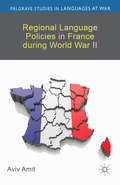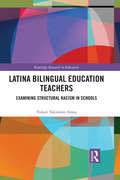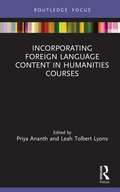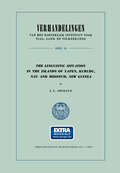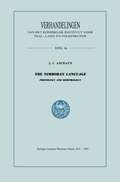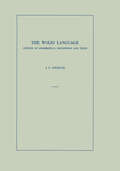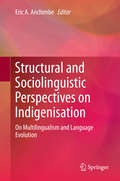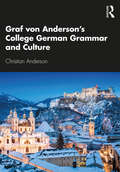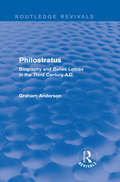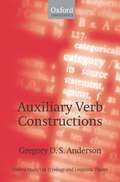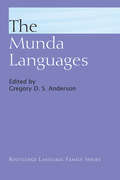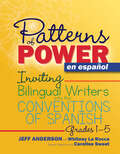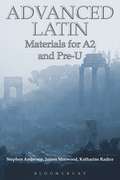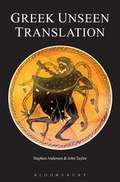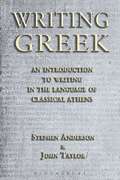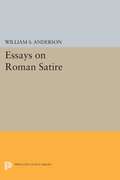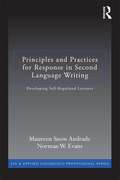- Table View
- List View
Regional Language Policies in France during World War II (Palgrave Studies in Languages at War)
by A. AmitDuring Germany's occupation of France in WWII, French regional languages became a way for people to assert their local identities. This book offers a detailed historical sociolinguistic analysis of the various language policies applied in France's regions (Brittany, Southern France, Corsica and Alsace) before, during and after WWII.
Latina Bilingual Education Teachers: Examining Structural Racism in Schools (Routledge Research in Education #22)
by Yukari Takimoto AmosUsing critical race theory and whiteness studies as theoretical frameworks, this book traces two Latina bilingual education teachers in three different professional phases: as paraprofessionals, teacher candidates, and certified teachers. Grounded in a longitudinal case study, this book sheds light on the effects of institutional racism when Latina/o educational professionals attempt inclusion in white dominant organizations, such as schools. Revealing and analyzing the structural racism present in schools and the obstacles it creates for professionals of color, the author exposes the racist practices that are hidden from view and offer practical solutions to combat them.
Latina Bilingual Education Teachers: Examining Structural Racism in Schools (Routledge Research in Education #22)
by Yukari Takimoto AmosUsing critical race theory and whiteness studies as theoretical frameworks, this book traces two Latina bilingual education teachers in three different professional phases: as paraprofessionals, teacher candidates, and certified teachers. Grounded in a longitudinal case study, this book sheds light on the effects of institutional racism when Latina/o educational professionals attempt inclusion in white dominant organizations, such as schools. Revealing and analyzing the structural racism present in schools and the obstacles it creates for professionals of color, the author exposes the racist practices that are hidden from view and offer practical solutions to combat them.
Incorporating Foreign Language Content in Humanities Courses
by Priya Ananth Leah Tolbert LyonsIncorporating Foreign Language Content in Humanities Courses introduces innovative ways to integrate aspects of foreign language study into courses containing humanities concepts. The edited collection offers case studies from various universities and across multiple languages. It serves as a useful guide to all foreign language faculty with any language expertise (as well as others interested in promoting foreign languages) for the adaptation and development of their own curricula. Infusing foreign language content into English-taught humanities courses helps promote languages as practical and relevant to students. It will be of interest to language educators, including teachers, teachers-in-training, teacher educators, and administrators.
Incorporating Foreign Language Content in Humanities Courses
by Priya Ananth Leah Tolbert LyonsIncorporating Foreign Language Content in Humanities Courses introduces innovative ways to integrate aspects of foreign language study into courses containing humanities concepts. The edited collection offers case studies from various universities and across multiple languages. It serves as a useful guide to all foreign language faculty with any language expertise (as well as others interested in promoting foreign languages) for the adaptation and development of their own curricula. Infusing foreign language content into English-taught humanities courses helps promote languages as practical and relevant to students. It will be of interest to language educators, including teachers, teachers-in-training, teacher educators, and administrators.
The Linguistic Situation in the Islands of Yapen, Kurudu, Nau and Miosnum, New Guinea (Verhandelingen van het Koninklijk Instituut voor Taal-, Land- en Volkenkunde)
by J. C. Anceaux2. The Sources 3 3. The Language Map . 6 4. The Comparative Word-List. 13 5. The quantitative Analysis . 80 6. Phonological Relationships 149 7. Verbal Forms . 150 8. Elements for indicating personal possession of the parts of the body. . . . . . . . . 157 . 9. Elements to indicate possession with regard to kinship terms . . . . . . . 163 Language Map at the end of the volume. -----------,, ..... --------- ', .......... A ' ~~ \ ~~ ~ \ \ .......... e· ., .. c. \ A-Biak '',, _____________ _ ,, ---~-' B-Waropen ............... ~ ---------- ~--- C-Mor D-Wandamen ~ E-Dusner f. Ron G-Meoswar Geelvink Bay H -lrarutu ...... , .......... ..... , ..... I ' " I I 0 I Sketch Map I I I ,-----; I \ \~_/\ ' of the H 11~£W~ I I \ \. 1,_'8_} n / r ';!?;' r ' • Geelvink Bay Area (Scale 1 : 2.350.000) Indicated are the areas of the languages used for comparison.
The Nimboran Language: Phonology and Morphology (Verhandelingen van het Koninklijk Instituut voor Taal-, Land- en Volkenkunde)
by J. C. AnceauxStructural and Sociolinguistic Perspectives on Indigenisation: On Multilingualism and Language Evolution
by Eric A. AnchimbeDescriptions of new varieties of European languages in postcolonial contexts have focused exceedingly on system-based indigenisation and variation. This volume–while further illustrating processes and instantiations of indigenisation at this level–incorporates investigations of sociolinguistic and pragmatic phenomena in daily social interaction–e.g. politeness, respect, compliment response, naming and address forms, and gender–through innovative analytic frameworks that view indigenisation from emic perspectives. Focusing on postcolonial Cameroon and using natural and questionnaire data, the book assesses the salience of linguistic and sociocultural hybridisation triggered by colonialism and, recently, globalisation in interaction in and across languages and cultures. The authors illustrate how the multilingual nature of the society and individuals’ multilingual repertoires shape patterns in the indigenisation and evolution of the ex-colonial languages, English and French, and Pidgin English.
Graf von Anderson's College German Grammar and Culture
by Christian AndersonGraf von Anderson’s College German Grammar and Culture is a beginners’ textbook (CEFR A1-B2, ACTFL novice low – intermediate low) for the German language for college students and for those engaged in self-study with popular software programs and apps. In addition to illuminating profiles of key places and individuals who helped shape German history from Roman times to the present day, the textbook also includes important cultural briefings. Chapter by chapter the book delineates the scope of the German language, beginning with “ich”, and moving on to subjects and verbs. Later chapters introduce cases, indirect and direct objects, prepositions, tenses, moods, and adjectives. Each chapter includes challenging exercises, and an answer key is provided. The rich cultural component in each chapter includes a travel guide, a historical snapshot, several musical selections, and a German text to read. This book is a straightforward and thorough introduction to the basic structures of German grammar and provides an overview of selected highlights of German culture to engage and enthuse.
Graf von Anderson's College German Grammar and Culture
by Christian AndersonGraf von Anderson’s College German Grammar and Culture is a beginners’ textbook (CEFR A1-B2, ACTFL novice low – intermediate low) for the German language for college students and for those engaged in self-study with popular software programs and apps. In addition to illuminating profiles of key places and individuals who helped shape German history from Roman times to the present day, the textbook also includes important cultural briefings. Chapter by chapter the book delineates the scope of the German language, beginning with “ich”, and moving on to subjects and verbs. Later chapters introduce cases, indirect and direct objects, prepositions, tenses, moods, and adjectives. Each chapter includes challenging exercises, and an answer key is provided. The rich cultural component in each chapter includes a travel guide, a historical snapshot, several musical selections, and a German text to read. This book is a straightforward and thorough introduction to the basic structures of German grammar and provides an overview of selected highlights of German culture to engage and enthuse.
Philostratus: Biography and Belles Lettres in the Third Century A.D. (Routledge Revivals)
by Graham AndersonThis study of Philostratus , first published in 1986, presents the Greek biographer’s treatment of both sophists and holy men in the social and intellectual life of the early Roman Empire, which also displays his own distinctive literary personality as a superficial dilettante and an engrossing snob. Through him we gain a glimpse of the rhetorical schools and their rivalries, as well as a bizarre portrayal of the celebrated first-century holy man Apollonius of Tyana, long loathed by his later Christian press as a Pagan Christ. Rarely does a biographer’s reputation revolve round the charge that he forged his principal source. Graham Anderson’s account produces new evidence which supports Philostratus’ credibility, but it also extends the charges of ignorance and bias in his handling of fellow-sophists. Philostratus is intended for any reader interested in the social, cultural and literary history of the Roman Empire as well as the professional classicist.
Philostratus: Biography and Belles Lettres in the Third Century A.D. (Routledge Revivals)
by Graham AndersonThis study of Philostratus , first published in 1986, presents the Greek biographer’s treatment of both sophists and holy men in the social and intellectual life of the early Roman Empire, which also displays his own distinctive literary personality as a superficial dilettante and an engrossing snob. Through him we gain a glimpse of the rhetorical schools and their rivalries, as well as a bizarre portrayal of the celebrated first-century holy man Apollonius of Tyana, long loathed by his later Christian press as a Pagan Christ. Rarely does a biographer’s reputation revolve round the charge that he forged his principal source. Graham Anderson’s account produces new evidence which supports Philostratus’ credibility, but it also extends the charges of ignorance and bias in his handling of fellow-sophists. Philostratus is intended for any reader interested in the social, cultural and literary history of the Roman Empire as well as the professional classicist.
Auxiliary Verb Constructions (Oxford Studies In Typology And Linguistic Theory Ser.)
by Gregory D. S. AndersonThis is the most comprehensive survey ever published of auxiliary verb constructions, as in 'he could have been going to drink it' and 'she does eat cheese'. Drawing on a database of over 800 languages Dr Anderson examines their morphosyntactic forms and semantic roles. He investigates and explains the historical changes leading to the cross-linguistic diversity of inflectional patterns, and he presents his results within a new typological framework. The book's impressive range includes data on variation within and across languages and language families. In addition to examining languages in Africa, Europe, and Asia the author presents analyses of languages in Australasia and the Pacific and in North, South, and Meso-America. In doing so he reveals much that is new about the language families of the world and makes an important contribution to the understanding of their nature and evolution. His book will interest scholars and researchers in language typology, historical and comparative linguistics, syntax, and morphology.
The Munda Languages (Routledge Language Family Series)
by Gregory D.S. AndersonThe Munda group of languages of the Austroasiatic family are spoken within central and eastern India by almost ten million people. To date, they are the least well-known and least documented languages of the Indian subcontinent. This unprecedented and original work draws together a distinguished group of international experts in the field of Munda language research and presents current assessments of a wide range of typological and comparative-historical issues, providing agendas for future research. Representing the current state of Munda Linguistics, this volume provides detailed descriptions of almost all of the languages in the family, in addition to a brief chapter discussing the enigmatic Nihali language.
The Munda Languages (Routledge Language Family Series)
by Gregory D.S. AndersonThe Munda group of languages of the Austroasiatic family are spoken within central and eastern India by almost ten million people. To date, they are the least well-known and least documented languages of the Indian subcontinent. This unprecedented and original work draws together a distinguished group of international experts in the field of Munda language research and presents current assessments of a wide range of typological and comparative-historical issues, providing agendas for future research. Representing the current state of Munda Linguistics, this volume provides detailed descriptions of almost all of the languages in the family, in addition to a brief chapter discussing the enigmatic Nihali language.
Patterns of Power en español, Grades 1-5: Inviting Bilingual Writers into the Conventions of Spanish (Patterns of Power)
by Jeff Anderson Whitney La Rocca Caroline SweetAuthor Jeff Anderson and bilingual teacher and coach Caroline Sweet lead a vibrant approach to grammar instruction in Patterns of Power en español, Grades 1-5: Inviting Bilingual Writers into the Conventions of Spanish. Here, young, emergent writers are invited to notice the conventions of the Spanish language and build off them in this inquiry-based approach to instructional grammar. The book comes with standards-aligned lessons that can be incorporated in just 10 minutes a day. Patterns of Power’s responsive, invitational approach puts students in an involved role and has them explore and discuss the purpose and meaning of what they read. Students study short, authentic texts and are asked to share their findings out loud, engaging in rich conversations to make meaning. Inside you’ll find: Ready-to-use lesson plan sets that include excerpts from authentic and diverse Spanish mentor texts curated for grades 1-5 and can be adapted over 5 grade levels Real-life classroom examples, tips, and Power Notes gleaned from the authors’ experiences that can be applied to any level of writer Resources, including a Patterns of Power Planning Guide adapted for Spanish, to use in classroom instruction or as handouts for student literacy notebooks How to correlate to Spanish TEKS, Common Core, and other state standards Patterns of Power en español, Grades 1-5 provides a simple classroom routine that is structured in length and approach, but provides teachers flexibility in choosing the texts, allowing for numerous, diverse voices in the classroom. The practice helps students build cognitive recognition and provides a formative assessment for teachers on student progress. With these short lessons, students will gain confidence and move beyond limitation to produce effortless writing in your class and beyond. The Patterns of Power series also includes Patterns of Power, Grades 6-8: Inviting Adolescent Writers into the Conventions of Language; Patterns of Power, Grades 1-5: Inviting Young Writers into the Conventions of Language; Patterns of Power, Grades 9-12: Teaching Grammar Through Reading and Writing; and Patterns of Wonder, Grades PreK-1: Inviting Emergent Writers to Play with the Conventions of Language.
Patterns of Power en español, Grades 1-5: Inviting Bilingual Writers into the Conventions of Spanish (Patterns of Power)
by Jeff Anderson Whitney La Rocca Caroline SweetAuthor Jeff Anderson and bilingual teacher and coach Caroline Sweet lead a vibrant approach to grammar instruction in Patterns of Power en español, Grades 1-5: Inviting Bilingual Writers into the Conventions of Spanish. Here, young, emergent writers are invited to notice the conventions of the Spanish language and build off them in this inquiry-based approach to instructional grammar. The book comes with standards-aligned lessons that can be incorporated in just 10 minutes a day. Patterns of Power’s responsive, invitational approach puts students in an involved role and has them explore and discuss the purpose and meaning of what they read. Students study short, authentic texts and are asked to share their findings out loud, engaging in rich conversations to make meaning. Inside you’ll find: Ready-to-use lesson plan sets that include excerpts from authentic and diverse Spanish mentor texts curated for grades 1-5 and can be adapted over 5 grade levels Real-life classroom examples, tips, and Power Notes gleaned from the authors’ experiences that can be applied to any level of writer Resources, including a Patterns of Power Planning Guide adapted for Spanish, to use in classroom instruction or as handouts for student literacy notebooks How to correlate to Spanish TEKS, Common Core, and other state standards Patterns of Power en español, Grades 1-5 provides a simple classroom routine that is structured in length and approach, but provides teachers flexibility in choosing the texts, allowing for numerous, diverse voices in the classroom. The practice helps students build cognitive recognition and provides a formative assessment for teachers on student progress. With these short lessons, students will gain confidence and move beyond limitation to produce effortless writing in your class and beyond. The Patterns of Power series also includes Patterns of Power, Grades 6-8: Inviting Adolescent Writers into the Conventions of Language; Patterns of Power, Grades 1-5: Inviting Young Writers into the Conventions of Language; Patterns of Power, Grades 9-12: Teaching Grammar Through Reading and Writing; and Patterns of Wonder, Grades PreK-1: Inviting Emergent Writers to Play with the Conventions of Language.
Advanced Latin: Materials for A2 and PRE-U
by Stephen Anderson James Morwood Katharine RadiceAdvanced Latin offers a range of material to help students build and develop the knowledge and skills needed for A2 and Pre-U Latin. There are 24 translation/comprehension exercises, based on passages taken predominantly from Livy, Caesar and Ovid. These match exactly the requirements of A2, but the passages work equally well as unseens for those working towards Pre-U. Six further passages are offered for unseen translation only, and are designed to stretch the most able. There are then 12 passages of continuous prose for translation into Latin, each supported by notes to help the student; and an appendix that contains a comprehensive English-Latin vocabulary. To support the study of A2 and Pre-U literature, there are short commentaries on sample passages from each of the prescribed authors, demonstrating a variety of interpretative approaches. In addition, for each author there is an annotated bibliography, to guide both teacher and student to the most useful secondary literature available. A separate section focuses on the Pre-U unseen literary criticism option and offers six practice passages.
Advanced Latin: Materials for A2 and PRE-U
by Stephen Anderson James Morwood Katharine RadiceAdvanced Latin offers a range of material to help students build and develop the knowledge and skills needed for A2 and Pre-U Latin. There are 24 translation/comprehension exercises, based on passages taken predominantly from Livy, Caesar and Ovid. These match exactly the requirements of A2, but the passages work equally well as unseens for those working towards Pre-U. Six further passages are offered for unseen translation only, and are designed to stretch the most able. There are then 12 passages of continuous prose for translation into Latin, each supported by notes to help the student; and an appendix that contains a comprehensive English-Latin vocabulary. To support the study of A2 and Pre-U literature, there are short commentaries on sample passages from each of the prescribed authors, demonstrating a variety of interpretative approaches. In addition, for each author there is an annotated bibliography, to guide both teacher and student to the most useful secondary literature available. A separate section focuses on the Pre-U unseen literary criticism option and offers six practice passages.
Greek Unseen Translation (PDF)
by Stephen Anderson John TaylorA new collection of 120 passages from Greek authors. The first half contains twenty adapted passages building up to GCSE level, thirty lightly adapted ones for AS, and ten easy unadapted passages to introduce the translation of verse. The second half contains thirty prose and thirty verse passages of A2 standard, unadapted except by minor omissions. Vocabulary beyond the core assumed at each level is glossed.
Writing Greek: An Introduction to Writing in the Language of Classical Athens
by Stephen Anderson John TaylorPlanned as a companion volume to Writing Latin by Richard Ashdowne and James Morwood, this accessible guide to writing Greek is useful for anyone starting Greek prose composition. Part 1 deals with the constituent elements of the simple sentence, and in Part 2 all major constructions are covered, each with thorough explanations and clear examples. Each chapter has either two or three exercises of practice sentences, further supplemented throughout Part 2 by passages for continuous composition. 100 important irregular verbs with their principal parts are listed at the back of the book, and there is a complete vocabulary for all the exercises, a useful learning and revision resource in itself.
Writing Greek: An Introduction to Writing in the Language of Classical Athens
by Stephen Anderson John TaylorPlanned as a companion volume to Writing Latin by Richard Ashdowne and James Morwood, this accessible guide to writing Greek is useful for anyone starting Greek prose composition. Part 1 deals with the constituent elements of the simple sentence, and in Part 2 all major constructions are covered, each with thorough explanations and clear examples. Each chapter has either two or three exercises of practice sentences, further supplemented throughout Part 2 by passages for continuous composition. 100 important irregular verbs with their principal parts are listed at the back of the book, and there is a complete vocabulary for all the exercises, a useful learning and revision resource in itself.
Essays on Roman Satire
by William S. AndersonIrvine Anderson carefully reconstructs the years between 1933 and 1950 and provides a case study of the evolution of U.S. foreign oil policy and of the complex relationships between the U.S. government and the business world.Originally published in 1982.The Princeton Legacy Library uses the latest print-on-demand technology to again make available previously out-of-print books from the distinguished backlist of Princeton University Press. These editions preserve the original texts of these important books while presenting them in durable paperback and hardcover editions. The goal of the Princeton Legacy Library is to vastly increase access to the rich scholarly heritage found in the thousands of books published by Princeton University Press since its founding in 1905.
Principles and Practices for Response in Second Language Writing: Developing Self-Regulated Learners (ESL & Applied Linguistics Professional Series)
by Maureen Snow Andrade Norman W. EvansBased on the assumptions that students expect feedback and want to improve, and that improvement is possible, this book introduces a framework that applies the theory of self-regulated learning to guide second language writing teachers’ response to learners at all stages of the writing process. This approach provides teachers with principles and activities for helping students to take more responsibility for their own learning. By using self-regulated learning strategies, students can increase their independence from the teacher, improve their writing skills, and continue to make progress once the course ends, with or without teacher guidance. The book focuses on the six dimensions of self-regulated learning —motive, methods of learning, time, physical environment, social environment, and performance. Each chapter offers practical activities and suggestions for implementing the principles and guidelines, including tools and materials that teachers can immediately use.
